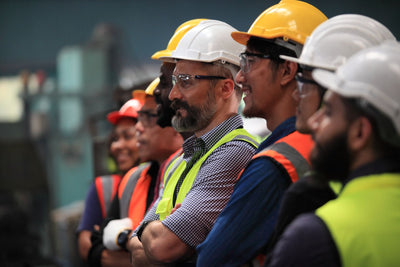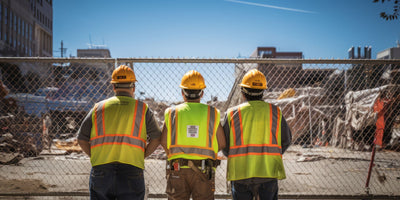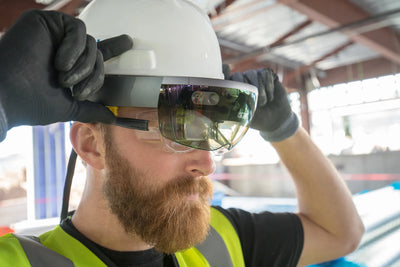Construction sites are bustling hubs of activity, where heavy machinery, equipment, and personnel converge to bring projects to life. Amidst the hustle and bustle, safety must always remain a top priority. One of the most effective tools for promoting safety and preventing accidents on construction sites is safety signage. In this blog, we'll explore the pivotal role of safety signage in preventing accidents and fostering a culture of safety in the construction industry.
Understanding the Significance of Safety Signage
-
Visual Reminders of Hazards: Safety signage serves as visual reminders of potential hazards and risks present on construction sites. From warning signs highlighting uneven surfaces to mandatory signs indicating the requirement for personal protective equipment (PPE), these signs keep workers and visitors informed and vigilant.
-
Guidance for Safe Behavior: Safety signage provides clear and concise guidance on safe behavior and practices. Whether it's directing pedestrians to designated walkways or instructing workers to wear safety harnesses in elevated areas, signage plays a crucial role in guiding individuals towards safe practices and preventing accidents.
-
Enhanced Awareness: By prominently displaying safety signage throughout the construction site, awareness of potential hazards is heightened among workers and visitors. This increased awareness fosters a culture of safety where individuals are more vigilant and proactive in identifying and addressing safety concerns.
-
Emergency Preparedness: Safety signage also plays a vital role in emergency preparedness and response. Signage indicating the location of emergency exits, first aid stations, fire extinguishers, and evacuation routes ensures that personnel can respond swiftly and effectively in case of emergencies, minimizing the impact of accidents.
Preventing Accidents Through Effective Safety Signage
-
Identifying and Mitigating Hazards: Safety signage helps identify and mitigate potential hazards before accidents occur. Whether it's warning signs for falling objects or hazardous materials, these signs prompt individuals to take necessary precautions and avoid dangerous situations.
-
Promoting Compliance with Safety Protocols: Mandatory signage communicates essential safety protocols and requirements that must be adhered to on the construction site. Whether it's wearing PPE, following traffic rules, or observing safety procedures, signage reinforces compliance and reduces the risk of accidents due to negligence.
-
Improving Communication and Awareness: Safety signage facilitates clear communication of safety information across language barriers and literacy levels. Universal symbols and colors ensure that safety messages are understood by all personnel, promoting consistent adherence to safety protocols and minimizing misunderstandings.
-
Creating a Culture of Safety: By prioritizing the installation and maintenance of safety signage, construction companies demonstrate their commitment to creating a safe working environment for all personnel. This commitment fosters a culture of safety where safety is valued, promoted, and integrated into every aspect of operations.
Conclusion
Safety signage plays a pivotal role in preventing accidents and promoting a culture of safety on construction sites. By serving as visual reminders of hazards, guiding safe behavior, enhancing awareness, and facilitating emergency preparedness, signage significantly reduces the risk of accidents and injuries. Construction companies must prioritize the installation, maintenance, and effective utilization of safety signage to protect the well-being of their personnel and ensure the success of construction projects. Ultimately, investing in safety signage is an investment in the health, safety, and success of everyone involved in the construction industry.






